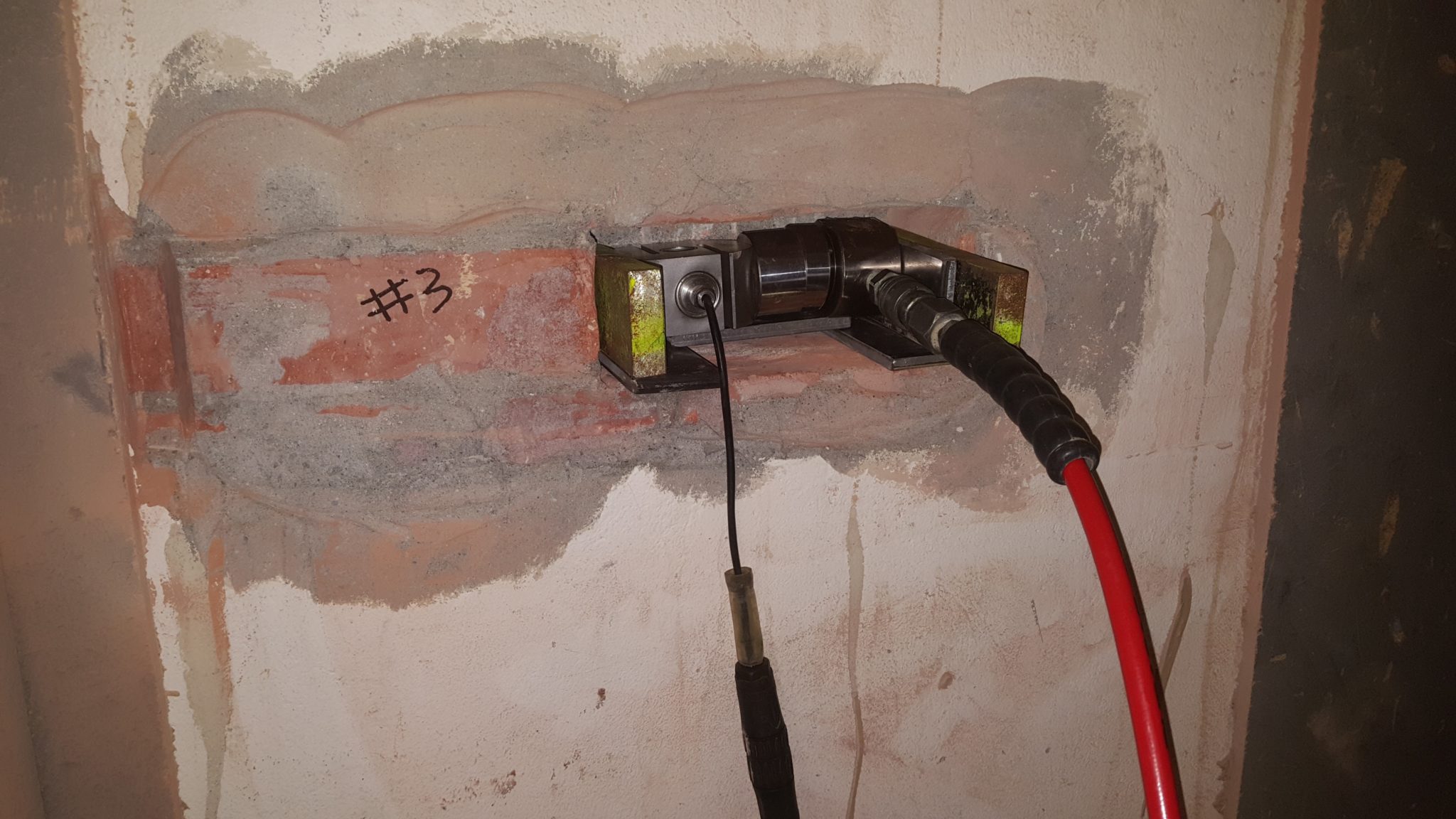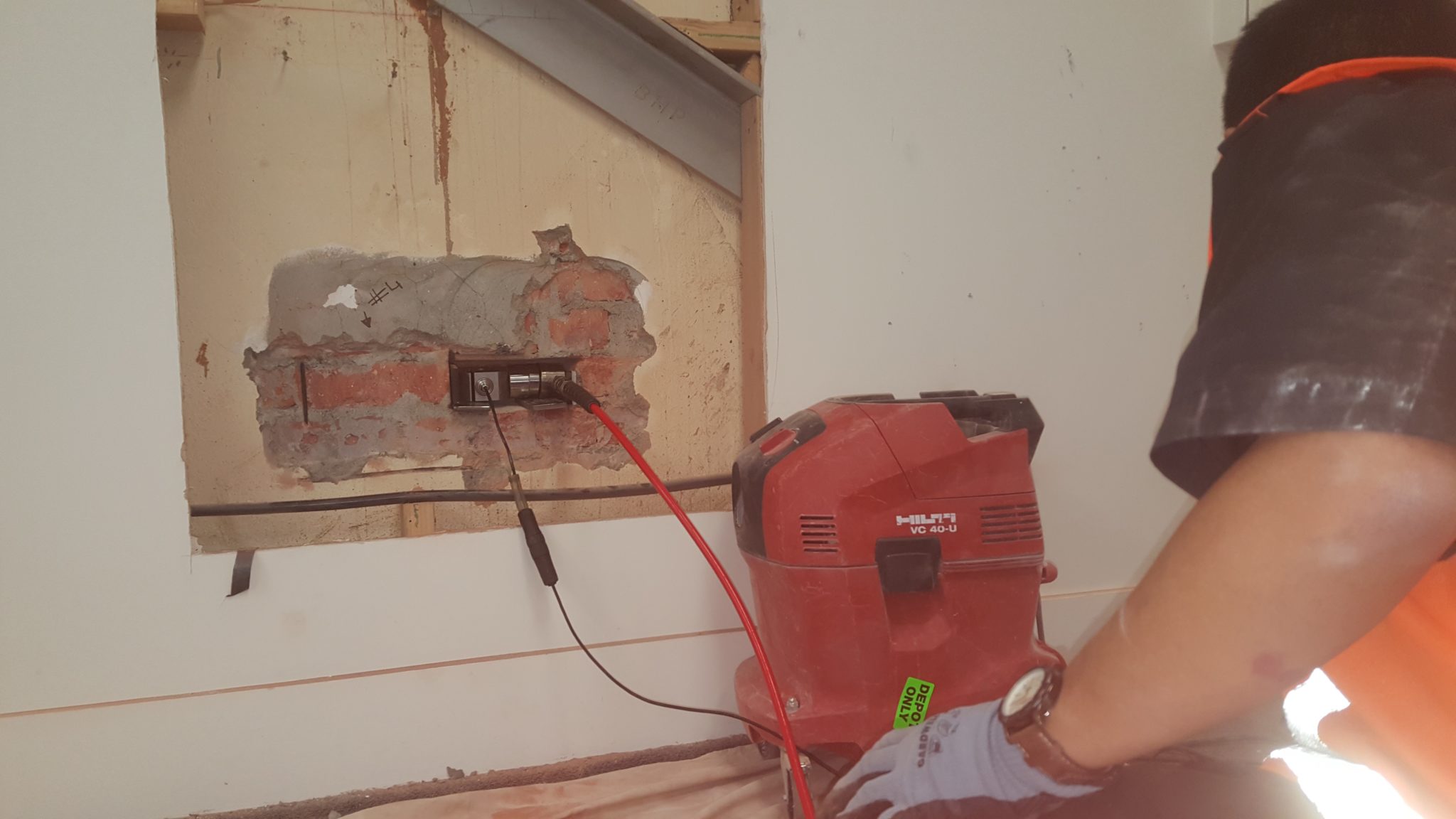We were recently engaged by structural engineers to assist them in determining the properties of two unreinforced masonry (URM) walls of their client’s building. The agreed objective of the URM testing was to assist with the design of their seismic strengthening program.
The client indicated to CSI the sections of the masonry walls that they wanted to be tested. CSI then conducted the site preparation for testing and completed Shear Bond Testing (to ASTM Standard C1531 Method B) and Compression Testing (to ASTM Standards C1314-14 and C1532/C1532M – 12).



The solution included removing the masonry cell unit adjacent to the tested cell to provide space for the hydraulic jack. The CSI team then conducted shear tests on 4 samples throughout different locations in the building as agreed with the client. After completion of shear tests a section of approximately 450 x 150mm was extracted from one of the wall sections and taken away for prism compression tests in the lab.
Masonry elements are so inhomogeneous and when coupled with inconsistent construction methods, can result in exposure to the environment. All of this adds up to significant challenges in determining the current capacity of masonry wall systems. Uncertainties in the strength parameters; such as using standardised values from unrelated tests, will lead to over-conservative design solutions that adds up to more cost. The benefits of the CSI testing service is that they provide engineers with only the data most relevant to the masonry units being investigated. As this project overview demonstrates, the URM testing provides information that will give engineers more confidence in the numbers they use when designing a retrofitting scheme for the masonry structures. With the ultimate end result being a more cost-effective solution provided for the client by their engineer.